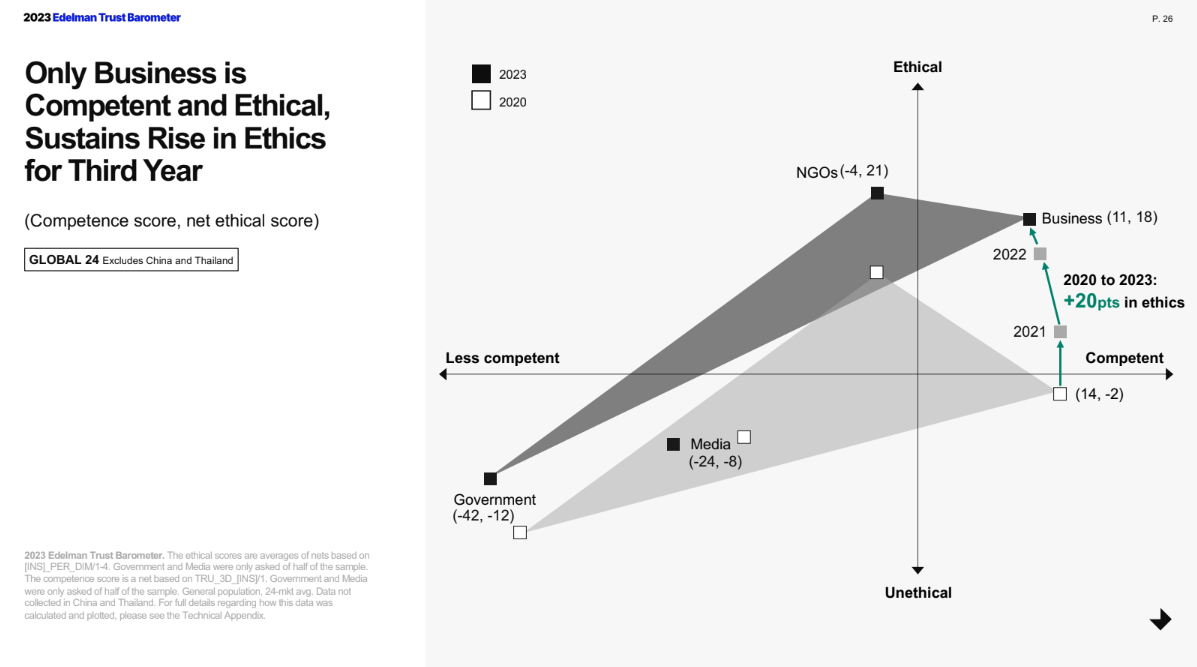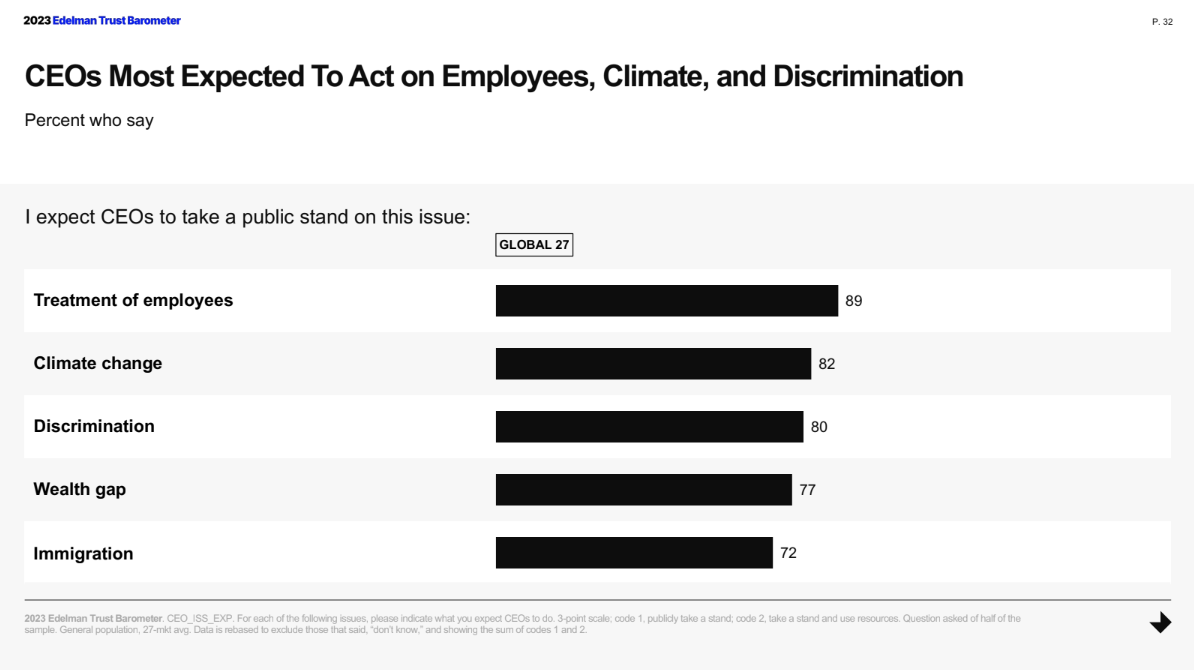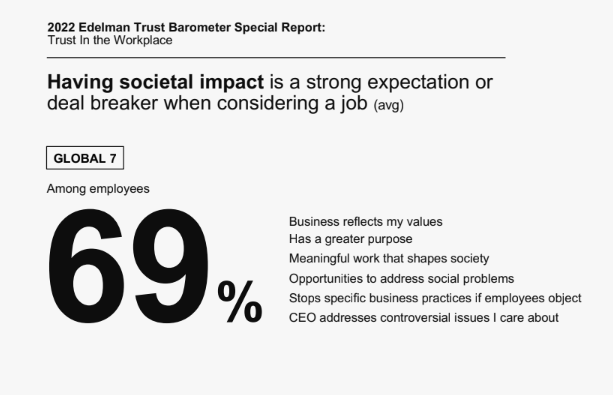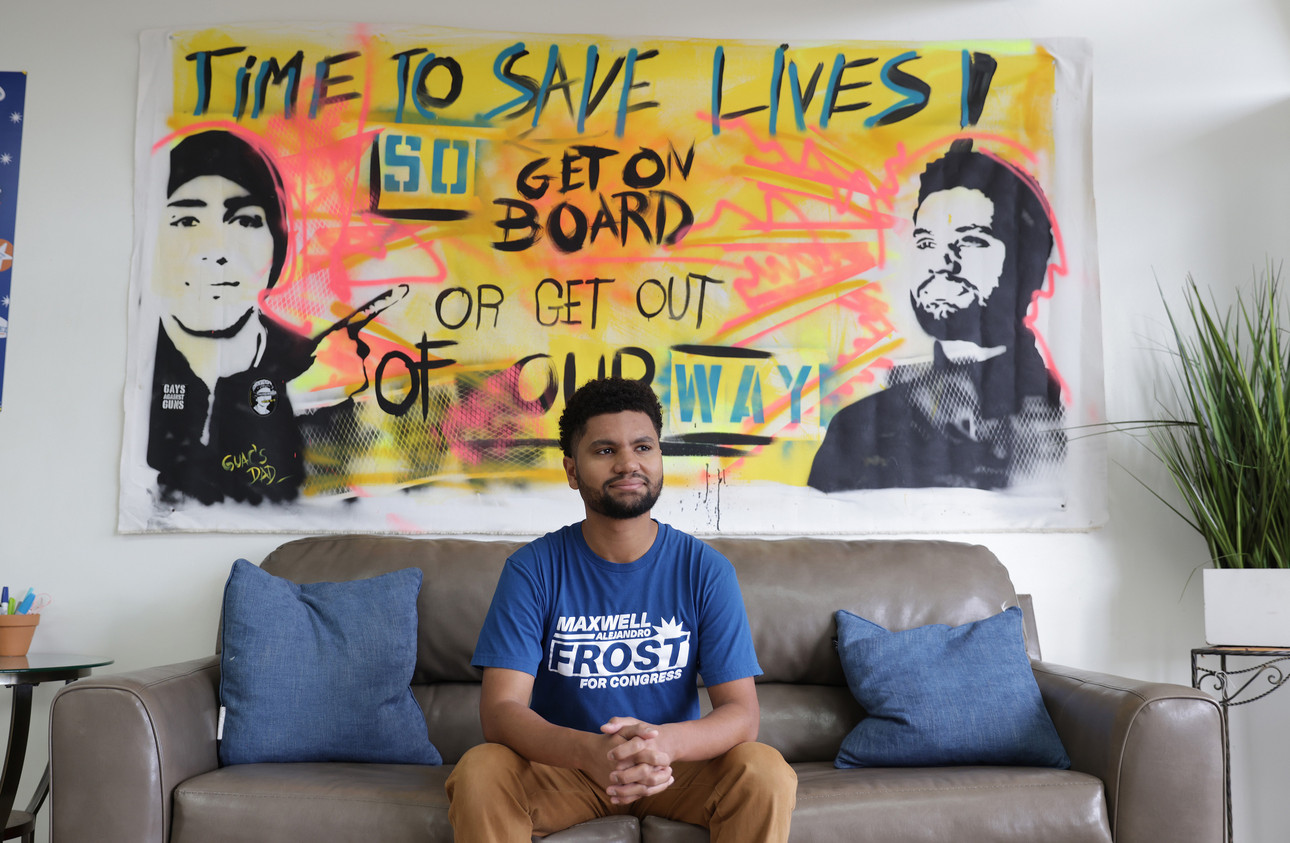
Ahead of the Curve: Age of Action.
The Ahead of the Curve series highlights five emerging social trends that may impact our audiences and, therefore, our outreach and engagement efforts.
I believe it’s vital to understand the larger social forces influencing our audiences so we can proactively adapt our outreach approaches accordingly instead of reactively jumping on the bandwagon.

Turning anxiety into activism.
The two previous trends describe how people seek joy and head outside to cope with today’s stress and anxiety. But it’s not sheer escapism.
Instead, it’s a means of recharging so they can continue to fight for what’s right.
Everyone, especially younger generations, is fed up. For the past decade, there has been declining trust in global governments to do what’s right. More recently, there is growing sentiment that governments and media journalists fuel greater divisiveness.
With businesses currently seen as the most competent entities to create change, consumers are turning anxiety into activism by pushing business leaders to do more and pushing themselves to take more meaningful actions.
This trend has been developing for a while, and we now find ourselves smack in the middle of the…
AGE OF ACTION
Here are four ways younger generations take action and influence older generations to follow suit.
1. Pressuring brands to do what’s right.
Currently, there is a real love-hate relationship with corporate brands.
Although many people feel disenchanted by capitalism, businesses are increasingly seen as the most competent and ethical institutions capable of doing better and creating change.
We tend to think of ‘applying pressure’ as calling brands out on social media when they’re not doing the right thing.
While this is part of the movement, there is a more significant shift towards applying positive pressure by putting money and support behind brands that take action.
And this isn’t just about Gen Z.
“While Millennials still represent the largest group of consumers and Baby Boomers still hold the largest spending power of any generation, 58% of older generations say that Gen Z influences the products they buy and what brands they buy them from.
Brands that fail to match Gen Z’s values—including authenticity, experience, identity, purpose, & creativity—will be left behind.” » DEPT Trends Report 2023.
2. Creating pressure from within.
Companies we buy from are not the only ones facing pressure to do better. In the Age of Action, people are directing this same pressure on their employers, even with the professional risks involved.
With polarization growing across the globe, Age of Action employees don’t want to see their CEOs stay silent on important issues. Instead, they expect them to take a public stand on the treatment of employees, climate change, discrimination, and more.
While Gen Z tends to be the most vocal on these issues, their influence shapes the behavior of others.
“63% of older generations are influenced by Gen Z on workplace culture.” » DEPT Trends Report 2023.
When CEOs and employers do not step up to meet these rising expectations, they will likely see employees take further action through internal protests and unionization. Or, they risk losing passionate, dedicated employees to other companies.
“Mckinsey found that the pandemic ignited a search for individual purpose and that 70% of people, especially millennials, are looking to their work to find it. Gartner even argued that a lack of employee purpose was fueling the Great Resignation, foreshadowing the same frustrations behind quiet quitting.” » DEPT Trends Report 2023.
3. Voting in younger politicians.
30% of Gen Z is now old enough to vote, and they are eager to make their voices heard at the polls. According to the Instagram 2023 Trend Report, Gen Z voters think the country needs more Gen Z politicians.
“Members of Gen Z have strong political points of view. As more young Americans reach voting age, expect increased visibility and activism for political issues which Gen Z is passionate about.” » Instagram 2023 Trend Report
In 2022, Maxwell Frost became the first Gen Z politician elected to the US Congress. Click on the image below to learn more about him.
With Climate Change being a priority topic for Gen Z, we can expect to see more pressure placed upon current and prospective politicians to make and deliver promises to protect the planet.
4. Being leaders of change in their own way.
Gen Z also places pressure upon themselves to take meaningful action and reduce their planetary footprints.
“85% of those (Gen Z) surveyed believe that people must be prepared to rethink the way they live and spend to tackle climate change, and 70% are prepared to make dramatic changes to their lifestyle if it will help tackle climate change.” » Wunderman Thompson, The Future 100.
#ecotok, a community of climate advocates on TikTok, had nearly 835 million views as of mid-January 2023.

We’ll explore how this generation shapes environmental behaviors in the fifth Ahead of the Curve email on low-cost sustainability. More to come on this!
STAYING AHEAD OF THE CURVE
This trend raises two thoughts about how the conservation and sustainability fields can stay ahead of the curve.
First, how can we help audiences channel their desire for action constructively? Second, how can conservation and sustainability organizations take more social actions themselves?
Here are a few ideas to get us started.
Offer clear actions to take.
This is the first thing I teach in my courses and workshops: we need to provide audiences with clear, specific, and actionable steps they can take.
Many audience members, especially younger generations, are aware of the issues facing the planet but are not sure what they can do to make a difference. More explicit actions in our messaging can help channel their intentions toward the most impactful steps.
Create opportunities to do more for your cause.
Managing volunteers and enthusiastic fans definitely takes more work and resources for any organization. Yet it’s a missed opportunity if none of the above calls to action help your organization expand its reach and impact. This may require rethinking or developing volunteer-based programs to include more action-oriented and activism-oriented roles.
Celebrate and support the real changemakers.
Although Gen Z is savvy about spotting green- and purpose-washing, it can be harder to sort through the nuances of who or what is “the best” for the planet among the growing set of good options. Experts and scientists in the field are trusted sources who can draw attention to products, innovations, brands, and even politicians on track to make a real difference.
Get ready to take a stand.
I know this topic is sensitive and scary for nonprofit organizations, but the era of remaining neutral is fading. I anticipate nonprofits receiving more and more pressure from employees and supporters to be vocal and active on social issues. This is an excellent time to prepare internally on how, when, where, and what the organization will advocate for. Here are tips you can follow from Ben & Jerry’s.
Take care of your employees.
Planet-saving organizations will naturally attract people who want to align their work with their values, but they won’t stay long if their mental health, purpose-driven goals, or rights to equitable treatment are at stake.
Labor unions are gaining popularity as a means to bring back power and rights to employees. This movement is happening among nonprofit organizations, as well.
“Workers, organizers, rank and file staff in nonprofits are trying to interrupt this ‘martyrdom’ syndrome, that by doing this work, your job is grueling, you work long hours and you are paid very little,” said Kevin Simowitz, the co-director of All Due Respect, which works to set new labor standards for community organizers.” » The New York Times, “They Want to Change the World. They Would Also Like a Raise.”
The Age of Action is a fast-moving trend that can be hard to stay ahead of, yet it’s also one that can significantly benefit all the work we do if we take some of the above steps.
Gen Z is more engaged and active on climate change and sustainability than any other generation, and they have a high degree of influence over the actions and behaviors of brands, governments, and older generations.
We can’t afford to be one of those brands that get left behind.
I hope you enjoyed the third Ahead of the Curve series post. Next up is The Growth of Gaming.
P.S. More information on the Gen Z influence can be found here.







